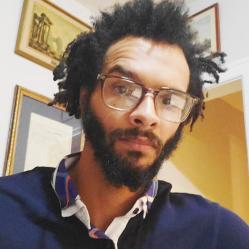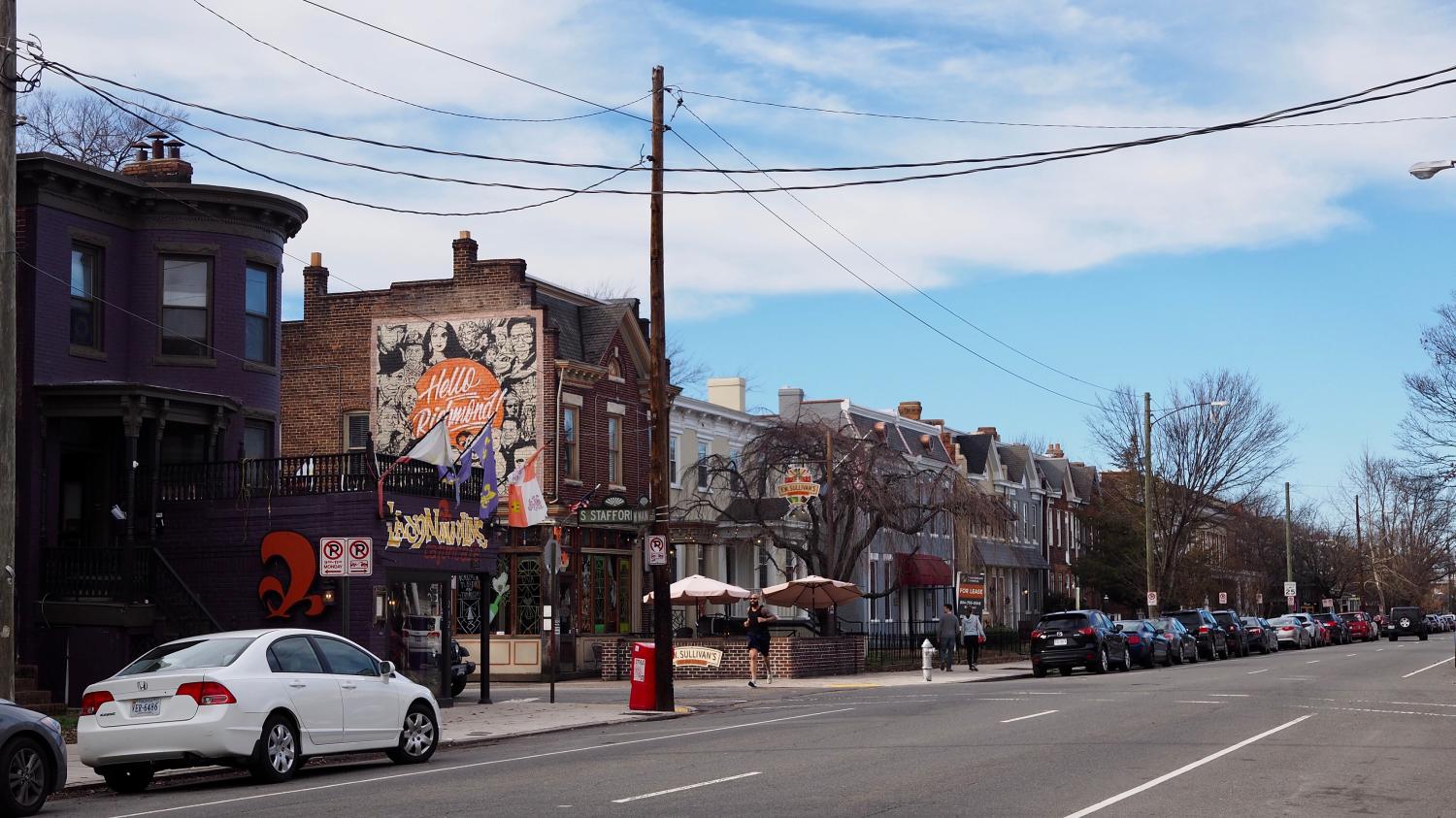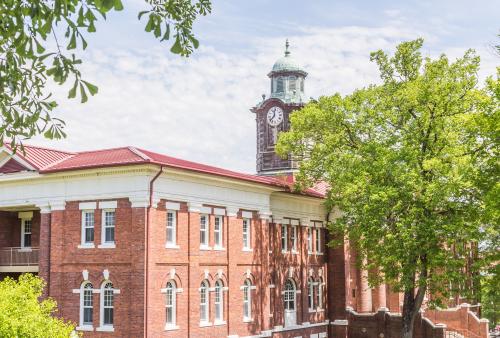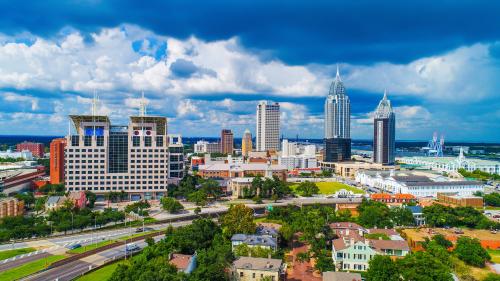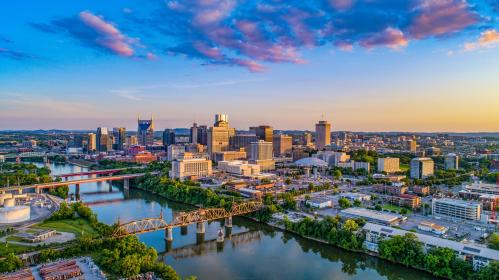On Monday, August 9, we corrected the percentage for Virginia’s Black and white populations with a bachelor’s degree or higher.
Contents
- Both statewide and within the Richmond metro area, serious racial disparities persist
- Inequality in Richmond is a place-based problem
- A legacy of racism leaves Black neighborhoods underinvested and vulnerable to climate change
- Grassroots efforts to improve education achievement rates
- What universities can do to invest in Richmond’s future
Last summer, as nationwide racial justice protests swept the nation, Richmond, Va.’s Black mayor Levar Marcus Stoney introduced a plan to remove the statues of Confederate leaders that lined the city’s Monument Avenue. “Richmond is no longer the capital of the Confederacy,” Mayor Stoney told reporters. But change could not come fast enough; protestors toppled several of the structures in the days after Stoney’s announcement. It’s no surprise that patience had worn thin, as the reification of Confederate leaders has documented negative impacts on Black workers’ earnings.
As local communities across the country experience such racial reckonings, universities are helping provide the historical research needed to contextualize contemporary racial disparities in wealth, health, and education. In this report, we draw on that university research as well as our own analysis to show how the legacy of encoded racism manifests itself spatially to limit opportunity in the Richmond metro area’s disadvantaged neighborhoods. We then explore how university partnerships can aid the city’s efforts to come to terms with its past while simultaneously boosting outcomes for disadvantaged Black-majority communities.
Both statewide and within the Richmond metro area, serious racial disparities persist
According to a 2020 University of Virginia (UVA) report, the persistence of the racial wealth gap adds “fuel to assertions that many of our social institutions are structurally racist and disproportionately exclude Black Americans.” In particular, the report found that Virginia’s Black families earn a median annual income that is 30% lower than white families—a statistic that has stayed roughly the same for the past 50 years.
Some of the income gap can likely be explained by disparities in postsecondary education attainment. According to the Federal Reserve Bank of Richmond, only 25.2% of Virginia’s Black population has a bachelor’s degree or higher, compared to 42.9% of the state’s white population—something local colleges and universities should be compelled to address. Still, a bachelor’s degree is not enough to fully mitigate the effects of systemic racism. The UVA report found that Black Virginians with a bachelor’s degree have a median wage that is still 10% lower than white Virginians with a bachelor’s degree.
Other drivers of low postsecondary outcomes are uneven homeownership and housing devaluation rates, which contribute to a racial wealth gap. Many homeowners use the equity from their homes to help finance their children’s college education. Lower homeownership rates and lower valuations mean fewer resources for college. The UVA report noted that “the homeownership rate was lower for Black Virginians in 2018 than in 2000 and lower in 2000 than in 1980.” It’s worse now than it was when the Fair Housing Act was enacted in 1968. In addition, the report noted that “since 1940, the homeownership rate for Black Virginians has risen by only 5 percent, compared to 20 percent for all other Virginians” and “in a third of Virginia counties, the homeownership rate for Black Virginians is lower today than it was in 1940, including some of its largest counties, such as Chesterfield and Fairfax.”
Meanwhile, Black Virginians who cannot afford to buy a home face precarity in renting. According to Bloomberg, “in Virginia, 60% of majority-Black neighborhoods have eviction rates greater than 10% — quadruple the national average.”
As with the state, the Richmond metro area itself suffers from pronounced racial disparities. For example, Richmond’s Black residents are more likely to experience over-policing and punitive school discipline and suspension. They have less access to public transit are disproportionately denied home loans at almost every income level. Finally, Black renters in Richmond experience higher rates of eviction than white renters at similar income levels, and despite the fact that only 22% of the Richmond metro area population lives in Black-majority neighborhoods, more than 50% of evictions take place in these neighborhoods.
Given these disparities, it’s not enough to take down monuments that generate myths of white supremacy and notions of Black inferiority. We must address disparities in education, health, and wealth as specifically place-based issues, as we outline in the next section. And we also need to leverage place-based assets such as colleges and universities to add value to the lives of community members, as explored in the final section.
Inequality in Richmond is a place-based problem
To better understand racial inequities in the Richmond metro area, we examine census-tract-level characteristics to see how race, income, education, and geographic location intersect for communities.
The map below shows that while Richmond’s Black population is spread throughout the metro area in terms of geography, it is also heavily concentrated in particular neighborhoods.

The graphs below show that degree attainment rates and median household income are lower in neighborhoods with a sizable Black population.


Taken together, this analysis illustrates that Richmond’s lack of opportunity and wealth is best understood as a place-based problem rather than a household-level problem. This data shows that to help Richmond’s Black residents experience greater social mobility, we need to focus on increasing wealth and opportunity in Richmond’s Black neighborhoods.
But before we can create strategies to improve these neighborhoods, we need to understand the root causes of Richmond’s place-based racial disparities. To do that, we examine the metro area’s history of racism, with attention to how that history continues to shape neighborhoods today.
A legacy of racism leaves Black neighborhoods underinvested and vulnerable to climate change
Richmond has long been an epicenter of racial injustice. The city was once a destination port for slave ships and had one of the largest slave markets in the country. After the Civil War and Reconstruction, Richmond pioneered racist zoning ordinances that then proliferated across the nation. And in the 20th century, Richmond notoriously blocked investment to Black neighborhoods through its practice of redlining.
The effects of racialized zoning and redlining are still felt today in marginalized communities across the country. A Federal Reserve Bank of Chicago report found that redlining’s legacy forms “a causal, and an economically meaningful, effect on outcomes like household income during adulthood, the probability of living in a high-poverty census tract, the probability of moving upward toward the top of the income distribution, and modern credit scores.”
Redlining has also led to ongoing spatial inequalities in Richmond, with implications for property value and public health. A recent New York Times article explains that “neighborhoods to Richmond’s west that were deemed desirable for investment, outlined in green on the old maps, remain wealthier and predominantly white, with trees and parks covering 42 percent of the land.” On the other hand, “neighborhoods in Richmond’s east and south that were once redlined are still poorer and majority Black, with much lower rates of homeownership and green space covering just 12 percent of the surface.”
As climate change leads to warming temperatures and dramatic swings in weather, the lack of green space and trees to provide shade can result in dangerous heat exposure for Richmond’s Black residents. The New York Times article revealed that “Richmond’s formerly redlined neighborhoods are, on average, 5 degrees hotter on a summer day than greenlined neighborhoods…Some of the hottest areas, like the Gilpin neighborhood, can see temperatures 15 degrees higher than wealthier, whiter parts of town.”
This rising heat has real repercussions for public health. “Richmond’s four hottest ZIP codes all have the city’s highest rates of heat-related emergency-room visits,” The New York Times noted, and “residents have high rates of asthma, diabetes and blood pressure, all conditions that can be worsened by heat.”
Richmond’s formerly redlined communities also suffer from their proximity to environmental hazards. A 2019 report analyzing the city’s historic and ongoing housing segregation noted that “32% of minorities in segregated minority communities live in close proximity to an environmental hazard compared to just 4% of whites living in segregated white communities.” The report argued that this toxic exposure is likely why “71% of minorities living in segregated minority communities live in areas with a healthy life expectancy of 62.1 years or less. In comparison, 9% of whites living in segregated white communities live in areas with a healthy life expectancy of 62.1 years or less.”
This spatial analysis illustrates that Richmond’s Black residents are sorted by income and education into neighborhoods whose interconnecting and reinforcing spatial and socioeconomic features are marred by the ongoing effects of racism. This racism was encoded into the land itself, as well as in law, banking, and other key institutions. And it is staggeringly difficult for residents of these neglected neighborhoods to escape the crushing cycle of Black intergenerational poverty.
For those Black residents in Richmond who do experience upward mobility, postsecondary education is often the key. This is one reason why many policymakers emphasize the importance of increasing pathways into college. While we will have more to say later about the shortfalls of focusing exclusively on education, it is worth highlighting some impactful grassroots work in Richmond to improve postsecondary education attainment, particularly for Black residents from low-income households.
Grassroots efforts to improve education achievement rates
Higher education has a vital role to play in rebuilding communities. In addition to providing original research, universities can facilitate grassroots organizing; connect community activists with capital, expertise, and other resources; and transform local labor markets through direct employment as well as innovative partnerships with other local employers.
Many initiatives in higher education focus almost exclusively on boosting enrollment. For example, in the Richmond metro area, state and local leaders have partnered with nonprofit organizations and foundations to address racial disparities in education and wages through grassroots action. Much of this work has been driven by (and funded through) the Lumina Foundation, an organization dedicated to ensuring that 60% of Americans earn “a college degree, certificate, industry-recognized certification, or other credential of value by 2025.”
In 2017, the Lumina Foundation partnered with Bridging Richmond (an initiative founded by Virginia Commonwealth University) to work toward boosting college attainment in the metro area. In 2019, Lumina provided $500,000 to the state to aid its efforts to reduce the racial education attainment gap by boosting degree completion for students of color by at least 5%. And in February 2021, Lumina gave the state an additional $725,000 toward efforts to achieve equitable college attainment.
This funding supports several initiatives that can improve education outcomes, including degree planning to help students streamline their education; transfer agreements between community colleges and four-year universities that make it easier for students to graduate with a bachelor’s degree without having to take lots of additional coursework; and microgrants that help students cover expenses like car repairs or child care, which could otherwise force them to drop out of their studies.
These efforts are important but insufficient for addressing Richmond’s deeper racial inequities. While postsecondary education can help individuals experience upward mobility, it cannot transform impoverished places, which require investment and development. In order to address these deeper issues, universities need to look beyond enrollment metrics to consider how they might leverage their capital, infrastructure, faculty rosters, and other assets to directly serve their surrounding areas.
What universities can do to invest in Richmond’s future
As Confederate statues fall and Richmond continues to experience its racial reckoning, now is a perfect time to focus on revitalizing the metro area’s Black neighborhoods. Richmond’s civic leaders and anchor institutions in higher education, finance, business, and the nonprofit space can lead coalitions rooted in community and economic development best practices to ensure greater racial equity.
The metro area has begun to take steps in this direction. In May, Mayor Stoney announced a 20-year partnership between the city, Virginia Union University, and the Richmond Redevelopment & Housing Authority to help residents in the Gilpin neighborhood. Supported in part by a $100,000 grant from the city, the partnership will provide workforce development and mentoring services for Gilpin adults as well as STEM education initiatives for middle schoolers.
Such a place-based and workforce development focus has great potential, especially if it can be connected to employer relationships and employer-offered apprenticeships that create meaningful opportunities without increased student debt. With that in mind, universities should also consider leveraging their institutional power as a large employer. For example, Virginia Commonwealth University’s education and health system is the largest employer in Richmond, with over 23,000 employees. The VCU Medical Center employs 11,000 workers alone. Such universities and university-affiliated hospitals should audit and improve their internal hiring practices to ensure that the jobs they create—academic, administrative, technical, support, etc.—are accessible to a wider range of people, using racial equity benchmarks to hold leaders accountable for outcomes. Universities should also ensure that their procurement and contracting processes—such as for supplying food or upgrading dorms—prioritize racial equity, particularly at the local and regional levels.
In the end, university involvement in both expanded education and place-based workforce development is both the moral path and the one that will lead to the most economic growth in the metro area. By investing in Richmond’s Black people, assets, and communities, we can rectify historic injustices, respond to the ongoing challenges of climate change, and unleash new economic innovation and growth.


